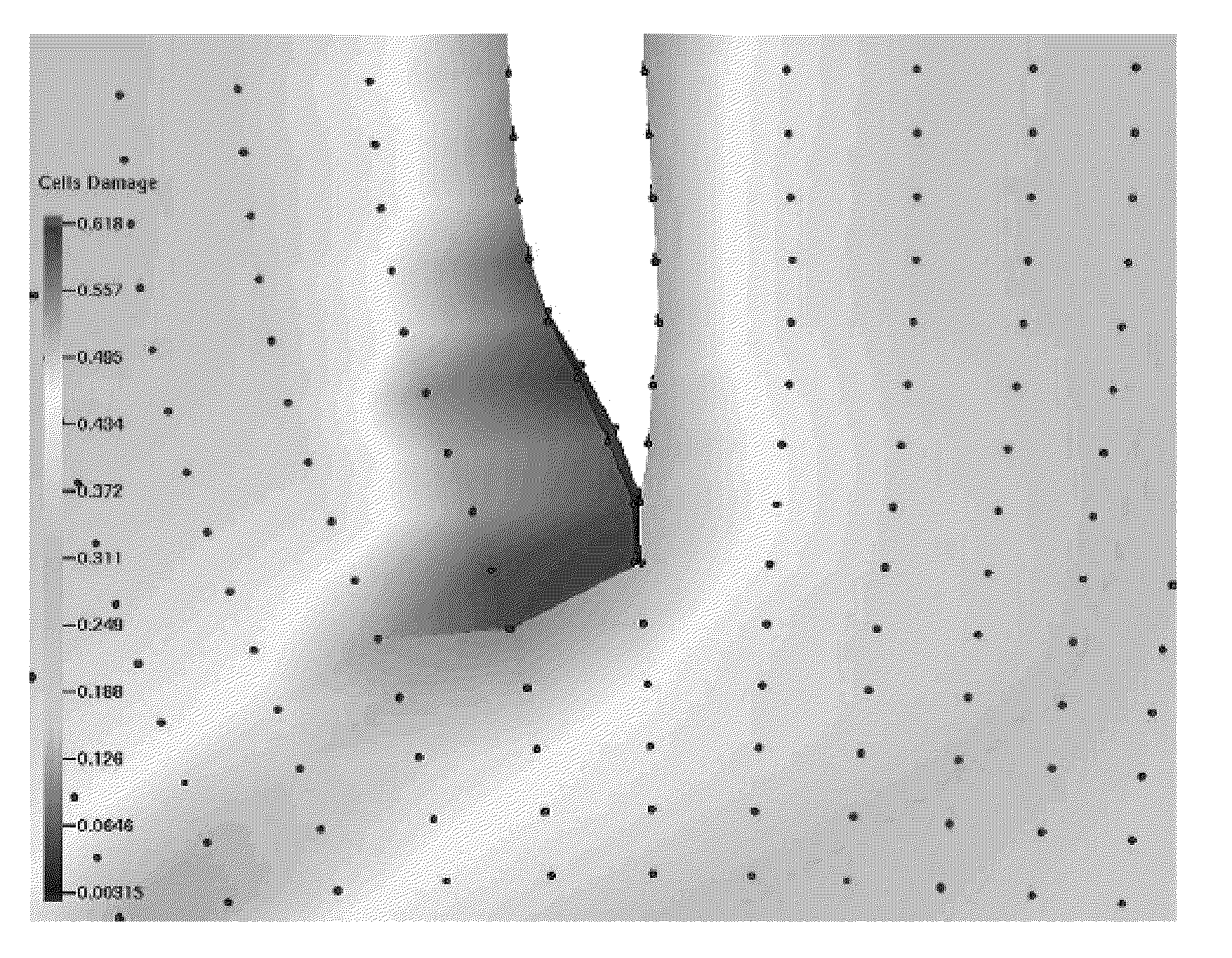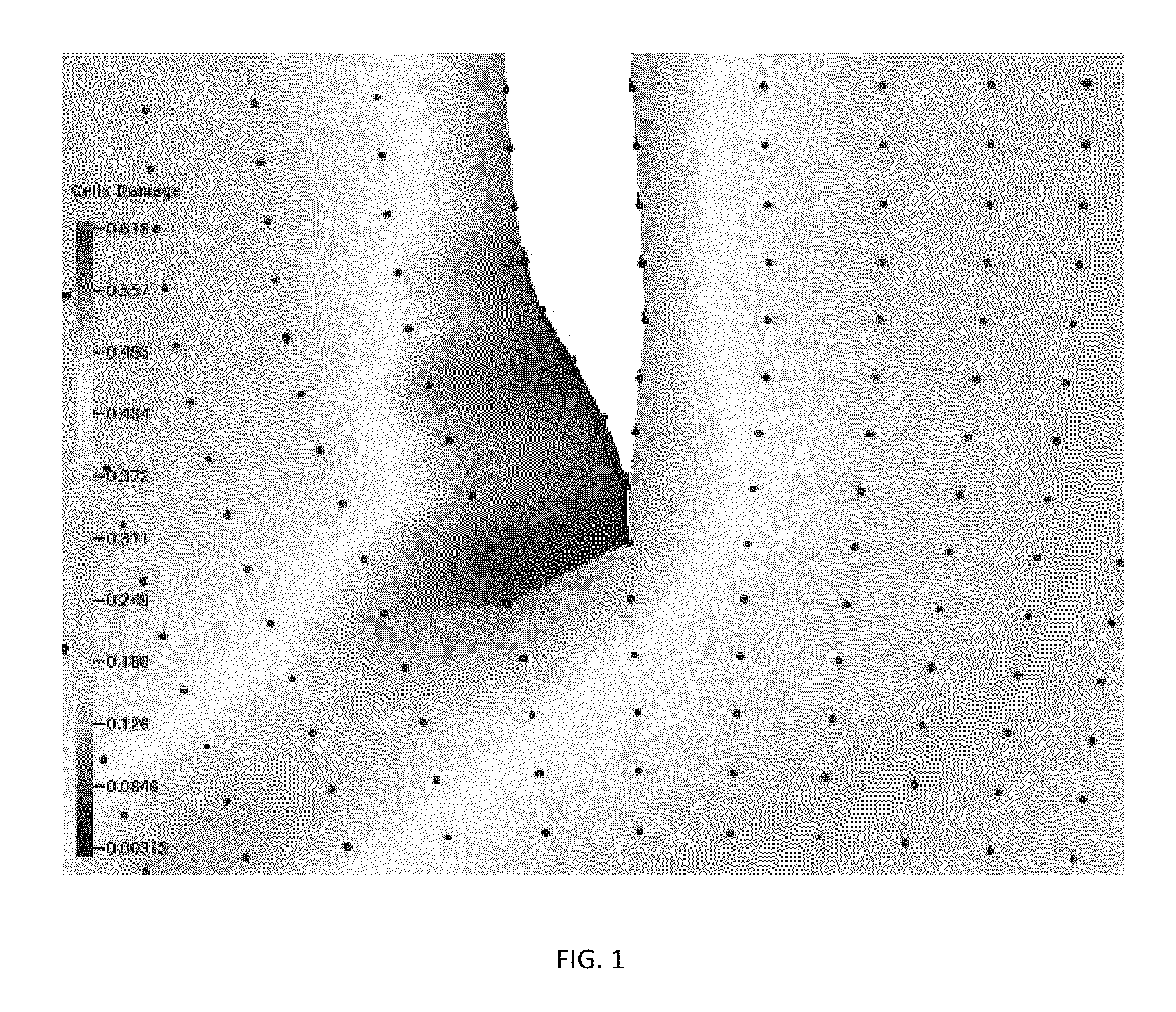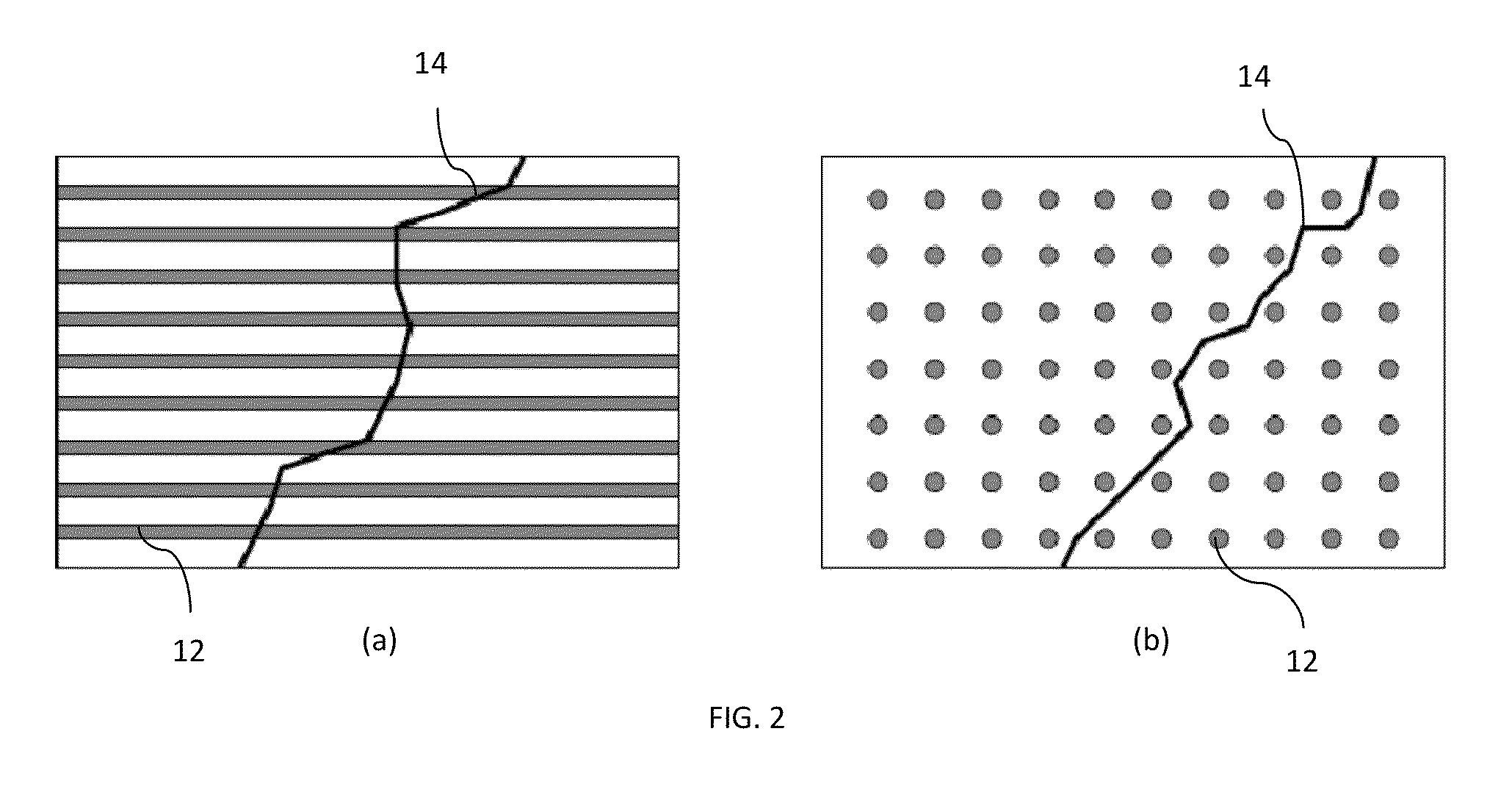Method for crack and fracture modeling in directed surfaces
a technology of directed surface and fracture morphology, which is applied in the direction of design optimisation/simulation, instruments, and mechanical means, can solve the problems of inability to obtain reliable information with any reliable amount of certainty, the number of molecules required for md simulation capable of modeling practical engineering fracture problems, and the inability to accurately model the actual location of the matrix. the information lost in the idealization of the fiber becomes critical, and the number of molecules required for md simulation is prohibitively larg
- Summary
- Abstract
- Description
- Claims
- Application Information
AI Technical Summary
Benefits of technology
Problems solved by technology
Method used
Image
Examples
Embodiment Construction
[0029]The Reproducing Kernel Particle Method (RKPM) [1] provides a method to construct a function basis for use in Galerkin solutions to partial differential equations without using a mesh; instead, the RKPM method uses local and dynamic interactions between nodes (particles). Since a mesh is not required to form the function space, it can evolve dynamically; in particular, it can be adjusted as the material topology changes. The RKPM method constructs a local interpolation field centered at each node that is based on local interaction with neighboring nodes. By introducing a visibility condition during a calculation, one can selectively limit the interaction between nodes to effectively cut the material. A version applicable to two-dimensional problems was presented in [2].
[0030]The node splitting method uses information determined from either the constitutive model or other, possibly external, source, to determine when a node should be split. Based upon this damage measure, the cr...
PUM
 Login to View More
Login to View More Abstract
Description
Claims
Application Information
 Login to View More
Login to View More - R&D
- Intellectual Property
- Life Sciences
- Materials
- Tech Scout
- Unparalleled Data Quality
- Higher Quality Content
- 60% Fewer Hallucinations
Browse by: Latest US Patents, China's latest patents, Technical Efficacy Thesaurus, Application Domain, Technology Topic, Popular Technical Reports.
© 2025 PatSnap. All rights reserved.Legal|Privacy policy|Modern Slavery Act Transparency Statement|Sitemap|About US| Contact US: help@patsnap.com



